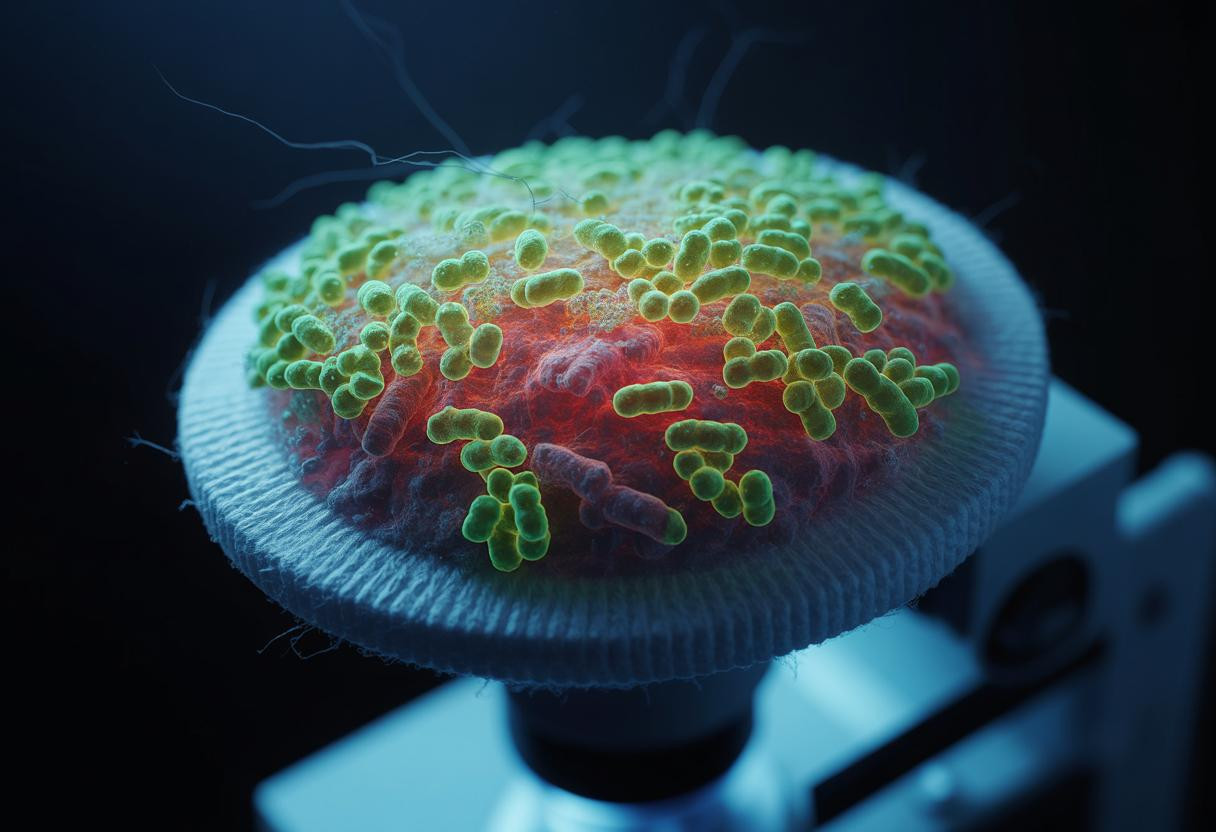That seemingly innocent cotton pad sitting in your bathroom drawer could be harboring thousands of bacteria colonies if you haven’t washed it properly. Recent textile research reveals that unwashed reusable cotton pads create the perfect storm for bacterial overgrowth, potentially putting your skin health at serious risk.
Unlike disposable alternatives, reusable cotton pads require meticulous care to prevent becoming breeding grounds for harmful microorganisms. The natural properties that make cotton appealing—its absorbency and organic composition—also make it surprisingly vulnerable to bacterial colonization.
The hidden science behind cotton’s bacterial attraction
Cotton’s hydrophilic nature creates a moisture-retentive environment that bacteria absolutely thrive in. When skincare residues, oils, and dead skin cells accumulate on unwashed pads, they provide the perfect nutrient source for rapid bacterial multiplication.
Research on textile microbiology shows that cotton’s porous fiber structure offers countless adhesion sites for bacteria. Unlike synthetic materials with smoother surfaces, cotton’s irregular weave traps microorganisms and prevents effective rinsing during casual cleaning attempts.
“The organic residues on cotton act like a buffet for bacteria,” explains textile scientist Dr. Maria Rodriguez. “Without proper sanitization, these pads become miniature ecosystems supporting various pathogenic species.”
Dangerous bacterial species that colonize cotton pads
Skin flora gone rogue
Staphylococcus epidermidis and Cutibacterium acnes, normally harmless skin bacteria, can multiply to dangerous levels on unwashed cotton. These organisms produce inflammatory compounds that cause irritation, breakouts, and potential infections when reintroduced to facial skin.
Environmental contaminants
Storage in humid bathroom environments introduces additional bacterial strains. Bacillus species, known for breaking down organic matter, flourish on product residues and can release toxic metabolites during their growth cycle.
Temperature plays a crucial role—cotton pads stored at room temperature (68-72°F) provide optimal conditions for bacterial reproduction, with colony counts potentially doubling every 20 minutes under ideal circumstances.
Why cotton beats synthetic materials in bacterial growth
Comparative studies reveal cotton’s superior bacterial hosting capabilities compared to polyester alternatives. While synthetic fibers repel moisture when dry, cotton’s absorbent nature maintains the humid microenvironment bacteria need to survive between uses.
The organic composition of cotton provides additional nutrients that synthetic materials lack. This creates a self-sustaining ecosystem where bacteria can metabolize both skincare residues and the cotton fibers themselves. For those seeking natural cleaning methods that eliminate harmful bacteria, understanding these material differences becomes crucial.
Proven strategies to eliminate bacterial overgrowth
Temperature-based destruction
Hot water washing at 140°F or higher denatures bacterial proteins and disrupts biofilm formation. This temperature threshold proves more effective than antimicrobial detergents alone for eliminating established bacterial colonies.
Strategic drying protocols
Complete moisture elimination prevents bacterial survival between uses. Air-drying in well-ventilated areas removes the humid conditions bacteria require, while direct sunlight provides additional UV sterilization benefits.
Those exploring DIY skincare solutions using natural ingredients should pay particular attention to pad hygiene, as natural formulations can provide additional nutrients for bacterial growth.
Essential maintenance habits for safe reuse
Replace cotton pads monthly regardless of washing frequency, as fiber degradation creates additional bacterial adhesion sites. Store clean pads in sealed containers with desiccant packets to maintain low humidity levels.
Consider antimicrobial-treated cotton alternatives that incorporate silver nanoparticles or zinc oxide coatings. These treatments maintain effectiveness through multiple wash cycles while reducing bacterial colonization risk.
For stubborn residue removal that traditional washing misses, natural solutions for stubborn residue removal can help eliminate the organic buildup that feeds bacterial growth.
The real cost of inadequate cotton pad hygiene
Beyond skin irritation, bacterial overgrowth on reusable cotton pads can lead to serious infections, particularly for individuals with compromised immune systems. The false economy of reusing inadequately cleaned pads often results in costly dermatological treatments and prolonged skin recovery periods.
Proper cotton pad maintenance requires the same attention as other aspects of personal hygiene—a small investment in time and effort that pays significant dividends in skin health and overall well-being.
